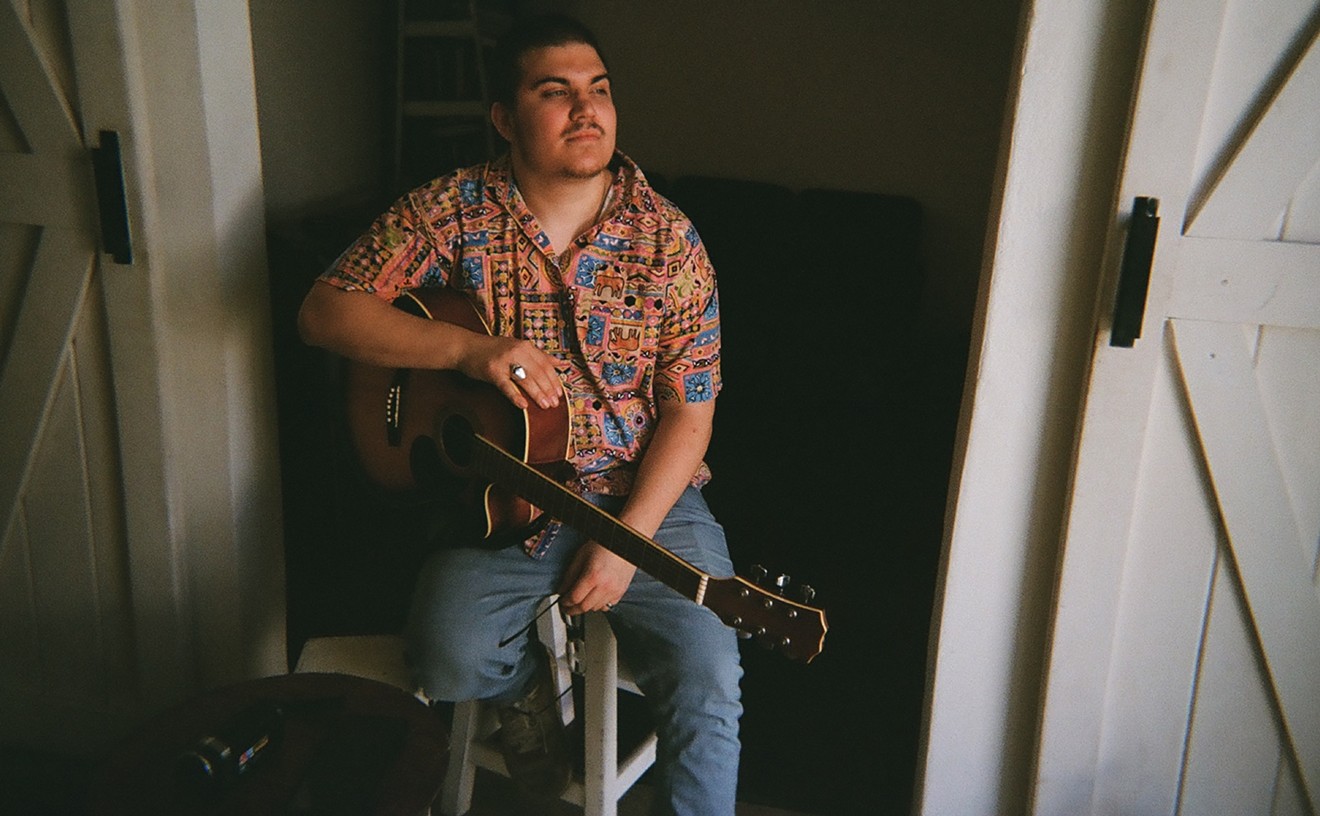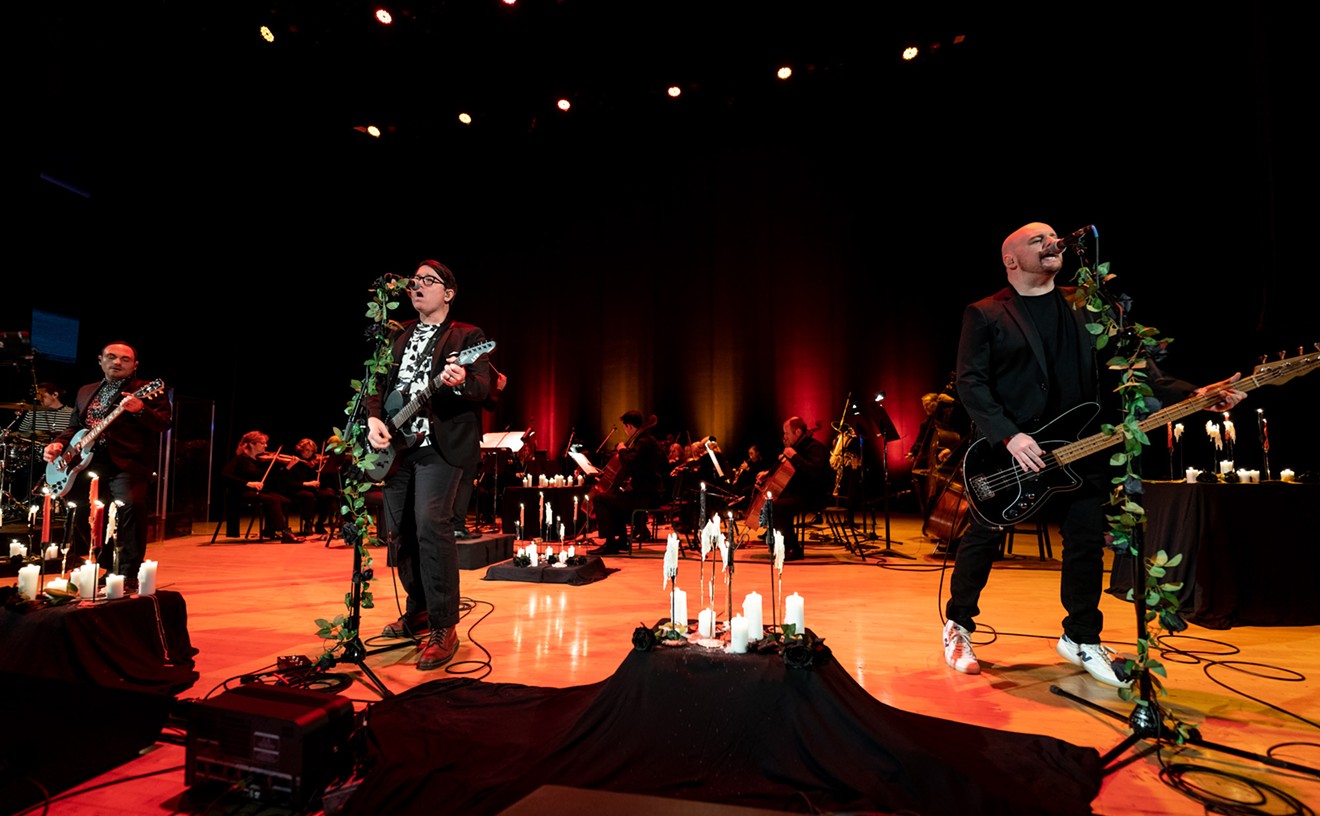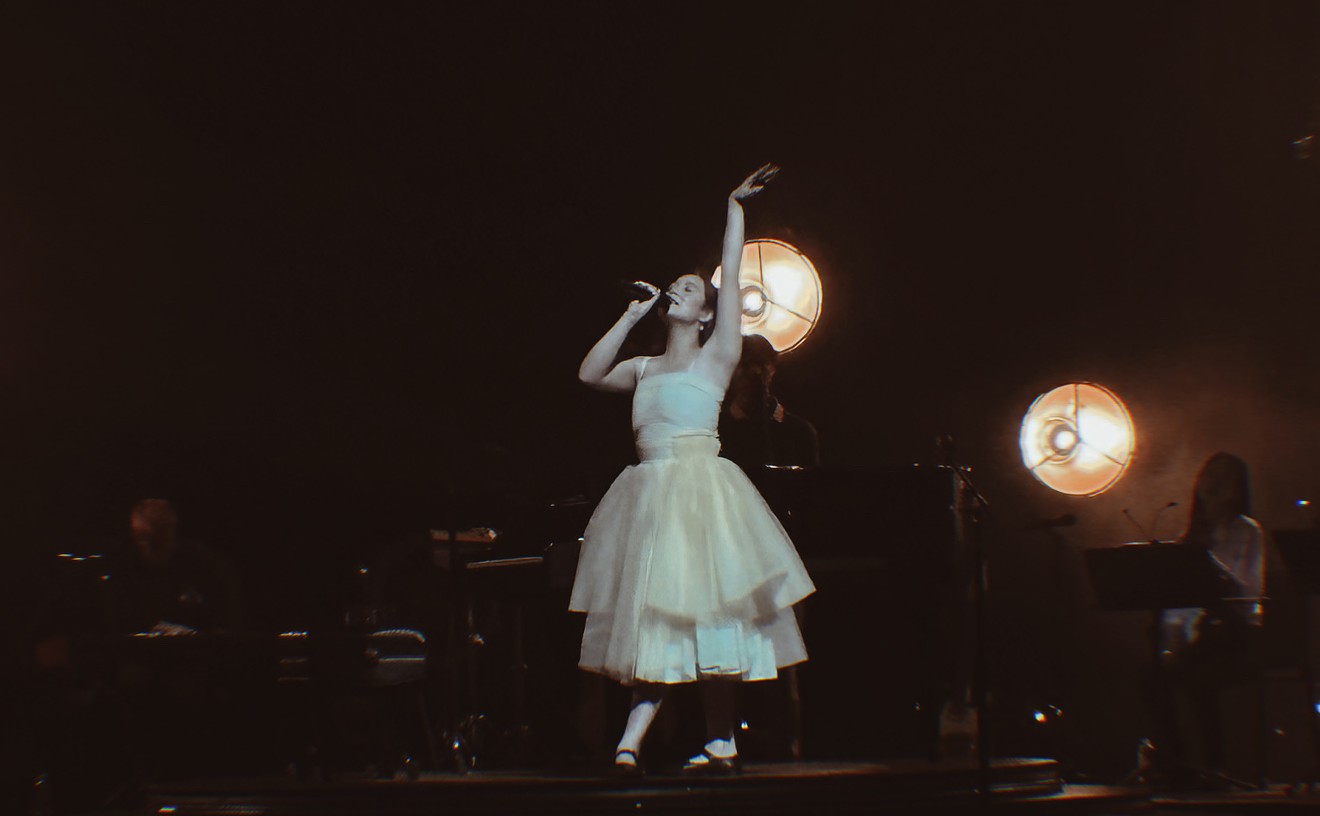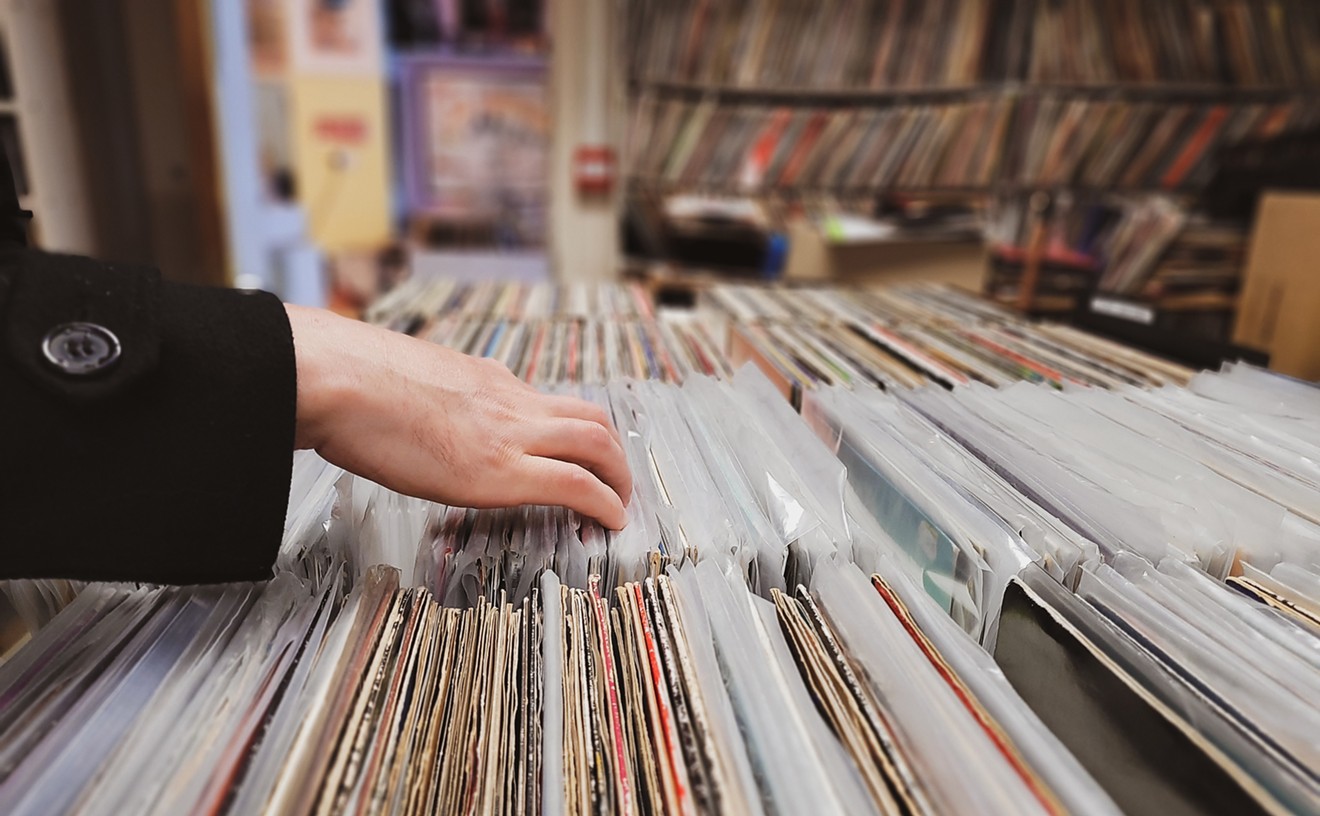This Jewish musician was proficient at his trade, a banjo player highly respected among his peers, many of whom had grown up in Kentucky and were reared on a steady diet of traditional music. The bluegrass musicians liked the Jewish musician well enough, shared many stages with him, and they never once begrudged him playing their music. Or so this young Jewish musician thought.
One day, while they were playing an old Bill Monroe standard, or some such thing, one of the old-time regulars looked at the Jewish musician and asked him, "Don't you have any of your own music?"
Henry Sapoznik's "conversion" is a fabled story in Jewish music circles, but it's no Jewish joke. From that day on, Sapoznik--like so many Jewish musicians of the late '70s and early '80s--started playing his music again. He became a klezmer, the Yiddish word for "musician," and began exploring the music of his ancestors, the sounds of a tradition relegated to wedding and bar-mitzvah bands in the Catskills.
Sapoznik, an ethnomusicologist born to Holocaust survivors who spoke nothing but Yiddish, began researching klezmer--the music of the Eastern-European immigrants, a tradition of religious and secular music that dates back as far as the 15th century. In 1979, he formed the band Kapelya with other Jewish musicians who had similar backgrounds. They were dedicated to preserving the "authentic sound, energy, and humor" of klezmer. Kapelya (itself Yiddish for "band") became one of the first groups to launch and nurture the so-called klezmer renaissance that has been flourishing in New York City's Lower East Side since the mid-'80s and has even begun to take root in Texas.
Klezmer--a term that once meant "musician," is the music of weddings, the freylachs (dances) played as the bride and groom are placed on chairs and carried above the exuberant guests; it's the music of celebration and community, the vibrant call of the clarinet or the soft whine of the violin; it's the music of Jewish theater and of old black-and-white cartoons, the sound track to the Diaspora containing hints of Russian, Bulgarian, Hungarian, and Polish music.
Klezmer is to the Jewish community what jazz is to the African-American community--the music of immigrants, the heartbeat of a culture that struggles to retain its identity in a society of assimilation.
"I'm skeptical of this term 'revival,'" says Alicia Svigels, violinist for the Klezmatics, perhaps the most innovative of the new klezmer bands. "As my Uncle Dinky said at my cousin David's wedding, 'Revival, schmevival. I've been playing this music for 60 years.' The word revival gives the impression this is ancient Greek. This isn't just a revival. It's the tradition."
In his liner notes to the 1993 CD Klezmer Pioneers: European and American Recordings, 1905-1952, Henry Sapoznik describes the klezmer recordings of the first part of this century as "a disposable commodity to be sold in an ethnic market"--78s released on small labels, printed in tiny quantities for Jews and Jews only; there thus exists only a small portion of the original recordings made by such first-generation Jewish-American klezmers as Joseph Cerniavsky, Michi Michalesco, and Alexander Olshanetsky. What few dozens do remain easily accessible have been preserved by Sapoznik on three indispensable CDs--Klezmer Pioneers; Dave Tarras: Yiddish-American Klezmer Music, 1925-1956; and Jakie Jazz 'Em Up: Old Time Klezmer Music--that chart the evolution of the music from its old-world roots as wedding and dance music to something far more evolved and complex.
When Jews began coming to America at the end of the 19th century, then flooding Ellis Island by the beginning of the 1900s, they found themselves immersed in a culture beginning to find its own sound. The New York Jews, especially, were exposed to the burgeoning sounds of jazz that filled stage productions and nightclubs.
Such musicians as Mishka Tsiganoff (known as "The Gypsy Accordionist"), clarinetists Naftule Brandwein and Dave Tarras (born in a Ukranian shetl in 1897 and renowned as the "Benny Goodman of Klezmer"), pianist-arranger Sam Medoff (who fronted the Yiddish Swingtette), and the classically trained sax player Sam Musiker assimilated the sounds of jazz while maintaining their own Jewish music. Listening to the recordings of the Yiddish Swingtette or the Abe Ellstein Orchestra, recorded in the late '40s and early '50s, it's difficult to discern where the two styles intersect.
The so-called klezmer revival has been slowly unfolding in New York City (specifically, the Lower East Side) for almost two decades. It has garnered attention in the Jewish press and in the smaller Manhattan weeklies, articles appearing since the late '80s predicting a renaissance led by such artists as the Klezmatics, Andy Statman, Brave Old World, the Klezmer Conservatory Band, Kapelya--all artists who manage to embrace tradition but do not suffocate in its arms.
For the most part, the new klezmers came to the music to express their Jewishness, to make them "feel Jewish," Statman says. When Alicia Svigels speaks of klezmer, she refers to it as "our music," and points out that so many of the young Jewish avant-garde musicians in New York have begun playing klezmer--even the likes of John Zorn in his Masada side project, and part-time Elvis Costello guitarist Marc Ribot.
Svigels, like so many of the Lower East Side klezmers who hang out at New York's art-rock Knitting Factory, came of age in New York during a period when there were radio stations that played nothing but Jewish music. They heard the music in their homes, many of their parents themselves Yiddish musicians who played the neighborhood weddings and bar-mitzvahs. When Svigels and her contemporaries, musicians like Kapelya's Sapoznik and others, got older they attended the KlezCamp in the Catskills and got day jobs working at the YIVO Institute for Jewish Research in Manhattan--a job that afforded them the time to transcribe old klezmer 78s and study old sheet music, films, and photographs in the school's extensive collection.
But the new klezmorim didn't just get their training by slowing down the old echoes and committing them to memory. Andy Statman, who switches back and forth between klezmer and bluegrass like Deion Sanders between baseball and football, studied for years with Dave Tarras until the klezmer legend died in 1989. Statman even inherited some of Tarras' clarinets with which Statman now records.
Ironically, the klezmer renaissance (at least in the press) is tied, in large part, to the 1993 release of Don Byron Plays the Music of Mickey Katz--the African-American Byron being one of the leading figures in the avant-jazz movement. There was certainly precedent for a non-Jew garnering success playing Jewish music: The Andrews Sisters scored their first big hit in 1938 with a recording of "Bay mir bistu sheyn," originally written and performed by Sholem Secunda. But the attention given to Byron's album annoyed some of the long-time klezmorim--not because of Byron's skin color or because they questioned his love for the music, but because Katz's music was almost a parody of Jewish music. With songs like "Haim Afen Range" ("Home on the Range") and "C'est Si Bon," Katz represents those who are "making ourselves clowns and innocuous to make the wider society laugh and like us," says Svigels.
"The thing that's bothered me about the revival is that sometimes there has been this unfortunate tendency toward kitsch," Svigels says. "And I have a theory about that, which is it's internalized anti-Semitism--the old thing about Jews being cute, funny, sad. But if you listen to Naftule Brandwein's music, there's nothing cute or sad about it. It's emotional, interesting, and satisfying with the level of complexity and sophistication you'd get from Bach or Charlie Parker."
Indeed, that's the great stereotype of klezmer music--that it's "fun and zany," as Brave Old World's Michael Alpert says with disdain. There's long been a penchant for people to dismiss klezmer as nothing but dance music or a novelty, a second-class sound track for parties. The mainstream press often degrades the music by referring to it as "Jewish soul music" (Newsweek) or "that boom-de-boom-de-boom Yiddish pop-music sound" (U.S. News and World Report), failing to recognize the complexities and emotional significance it possesses.
But in the end, it's folk music as much as jazz or the blues. Klezmer--like jazz or rock, for that matter--is simply a genre, a term that encompasses so many styles, whether traditional "old world beat" of the Klezmer Conservatory Band, the avant interpretations of the Klezmatics, or the Yid-hop and would-be punk of Frank London's The Shvitz. Even God is My Co-Pilot, one of the avant-punk bands on the Knitting Factory label, blends some Jewish music among dissonance and growling.
The most high-profile klezmer release yet is the new In the Fiddler's House, which was released by the classical Angel label two weeks ago as an Itzhak Perlman album. But it's less an Itzhak Perlman disc than a record on which he guests; his name is placed above the billing, there for big-name draw and prestige, but the real stars of the album are the Klezmatics, Brave Old World, the Andy Statman Klezmer Orchestra, and the Klezmer Conservatory Band. Perlman is merely an invited guest--a student this time in the class of the professors.
Though Perlman often speaks in the accompanying documentary (which aired on PBS last week and is available on video) of how klezmer was the music of his childhood--his parents emigrated from Poland to Israel, where Itzhak grew up--it does not come to him "as naturally as breathing." In the film, he is shown struggling to keep up with Brave Old World during an "impromptu" performance in a Cracow courtyard; he grimaces during a session with the Klezmatics, thrown by that band's penchant for jazz-like improv and wild experimentation.
"In Brave Old World," says Michael Alpert, who served as musical director for In the Fiddler's House, "we're struggling all the time against the easiest thing for people to latch on to--that klezmer is fun and zany and the whole wild and crazy persona image the music has--the stereotype. That was Perlman's idea of it, too. He even said he realized there's a depth to the music and a lot of stuff that's very contemplative within the music rather than it only being the happy, up, freylach dance-music he expected.
"He wasn't wild about the [Klezmatics' experimental] stuff at first, and certain things Brave Old World did. We were surprised and disappointed even, all of us attempting to do new things. We thought the great artist in him would appreciate the great art we were making. But he wasn't looking to klezmer for that."
Of the modern klezmer bands, the Klezmatics are probably the most innovative, though they began as strict traditionalists. Led by arranger-composer Frank London (who has worked with the likes of David Byrne, LL Cool J, and They Might Be Giants), their albums Rhythm and Jews and Jews with Horns echo the past but hint at a future in which klezmer begins to absorb everything from punk to rap. London's sound track for the documentary The Shvitz--a 1994 film about old Jewish men who hang out in the steam baths to shvitz (which is Yiddish for "sweat") and kibbutz (that is, visit)--even features house music with a Yiddish accent, a novelty that eventually overcomes such a derogatory description.
"A lot of people who felt turned off by the cute and kitschy thing about klezmer were happy they found us because we weren't embarrassing them," Svigels says. "The whole question of authenticity is silly because any music that lives must change. Otherwise, it atrophies and dies."
There are only two klezmer bands in Texas, both of which reside in Austin--Bill Averbach's Austin Klezmorim and Rubinchik's Kapelye (which means "Rubin's Band," appropriate since it's fronted by Bad Liver Mark Rubin). Rubin actually began playing in the Austin Klezmorim and performed on the band's self-released 1994 CD East of Odessa (which can be purchased in a synagogue gift-shop near you), lending his talents on stand-up bass, banjo, and tuba. But the Klezmorim is more of a "commercial outfit," Rubin says, an old-style band that performs at weddings and bar-mitzvahs and is geared toward the older, more traditional repertoire.
"I don't do that stuff," Rubin says. "And because I don't, I'm given a great amount of freedom. A wedding band is going to have to play requests from the bride and groom. You're gonna have to play 'Hava Nagila' and 'Bay Mir Bistu Sheyn.' They're part of the canon, but it's a real narrow band. There's room within the genre for much expansion.
"You're going to have [klezmer] evolve and react. Every time you think it's going to get more modern, there's some moldy figs coming along and playing it like they think it used to be. I'm weary of revivals. Being in a bluegrass band, or a band perceived as a bluegrass band, people are always labeling us as part of a revival. It's not a revival as much as the Bad Livers see ourselves as part of a continuum. We see ourselves as part of the tradition but also as contemporary."
Rubin--who once played in Killbilly and has played not only with the post-bluegrass Bad Livers, but also with former Glass Eye frontwoman Kathy McCarty, and the traditional border conjunto of Santiago Jimenez Jr.--has found that middle ground on which the pre-immigrant Eastern European Jews, the border Mexicans, and the Texas-Germans dance together. It's all fiddle and accordion music to him, a Texas sound where the definitions are less strict and the possibilities are more wide open.
The make-up of Rubinchik's Kapelya reflects that, including the likes of Erik Hokkanen (the fiddle player who has won the Kerrville Folk Festival award for best instrumentalist), singer Rachel Rhodes (who sings in Yiddish, Hebrew, and Russian), and Mike Maddux (who plays accordion with the Austin Klezmorim).
"I'm nuts about accordion and fiddle music, and here you get your fill," Rubin says. "All good stuff comes from the same place, and everybody in our band comes from these wild and diverse backgrounds, and it's hard to define what makes a tune Jewish. That's a real sticky wicket for me. I'll admit I'm a real novice at this whole bag, and it'll probably take me years to get it right.










